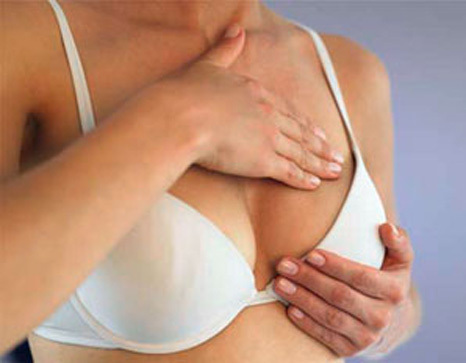Breast Cancer – Signs and Symptoms
Check each month: With the chance of 1 in every 22 women developing breast cancer, it is imperative to check your breasts every month. This can be done by first looking for signs of swelling, distortion of shape of one breast, skin dimpling, inward tuning of nipple, nipple redness or eczema.
The press your palm over your breast, checking for a lump, thickening of tissue, irritation. Pain is usually not the first sign of cancer. Periodic changes such as pain, nipple discharge or lumpiness could be caused by the period cycle. You could go to your gynecologist and ask her to show you how to do a breast examination. The trick is to check regularly, so you know how they feel normally. When a deviation occurs, you’ll identify it better. It’s important to make this check when your monthly period is not due. Also after you hit 40, get mammograms done at intervals of 12 to 18 months.
Prevent breast cancer: To reduce the risk factors, use of oral contraceptives judiciously, control weight, reduce saturated fat consumption and alcohol, do prudent hormone replacement therapy. Also, women who breastfeed babies show lower risk of breast cancer.
Women and Oral Contraceptives: Survival is no better or no worse among breast cancer patients who have used the birth control pill. The findings are broadly reassuring. “there just doesn’t appear to be any concern about women using the pill at younger ages from the standpoint of breast cancer,” said research team leader Dr Herbert R. Peterson, a professor at the university of North Carolina at Chapel Hill.
Researchers found no increased risk of death associated with use of the pill, duration of use, or any specific oral contraceptive formulation. Women currently taking oral contraceptives were actually at 10 percent lower risk of dying from the disease, but this finding may have been due to chance.
Signs and Symptoms of Breast Cancer
Knowing the signs and symptoms of breast cancer may help save your life. The earlier the disease is discovered, the more treatment options and the better chance of recovery you have.
Most breast lumps aren’t cancerous. Yet the most common sign of breast cancer for both men and women is a lump or thickening in the breast. Often the lump is painless. Other signs and symptoms of breast cancer include:
- Skin dimpling or puckering
- Development of new retraction or indentation of the nipple
- Redness of scaling of the nipple or breast skin
- A spontaneous clear or blood discharge from the nipple
Causes cancer is a group of abnormal cells that grow more rapidly than normal cells. Cancer cells also have the ability to invade and destroy normal tissues, either by growing directly in to surrounding structures or after traveling to another part of your body through your bloodstream or lymphatic system. Microscopic cancer cells form small clusters that continue to grow, becoming more densely packed and hard.
In most cases it isn’t clear what triggers abnormal cell growth in breast tissue in men. But doctors do know that between 5 percent and 10 percent of breast cancers in men are inherited. Defects in breast cancer gene 1 or 2 (BRCA1 or BCRA2) put you at greater risk of developing breast cancer. Other inherited genes also may increase your risk of developing breast cancer. Knowing your family history is very important to determine your chance of inheriting an abnormal gene. Most genetic mutations related to breast cancer aren’t inherited, but instead develop during your lifetime. These acquired mutations may result from radiation exposure, such as receiving chest radiation therapy in childhood, or from other, as yet unknown, factors. Such acquired mutations can’t be passed to other generations

